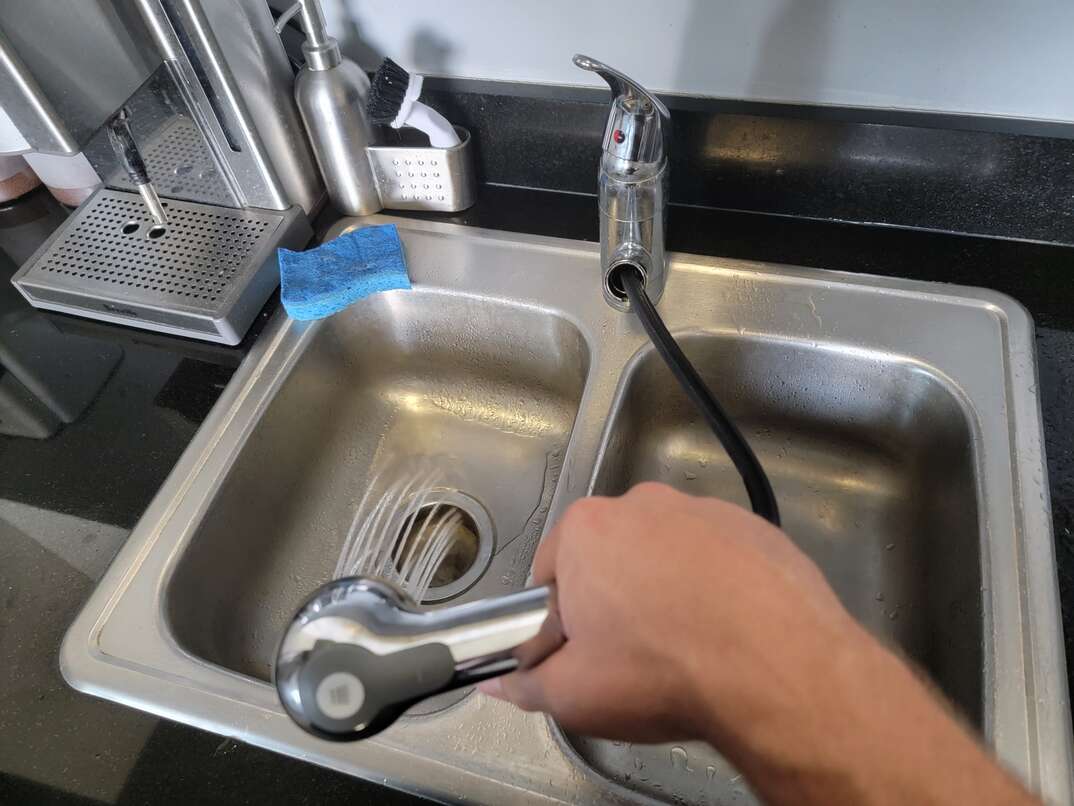How to Clean Your Stainless Steel Sink

From piled-up dishes to remnants of last night's dinner, your stainless steel sink is a receptacle for lots of gunk. Stainless steel makes an appearance in many kitchen fixtures, including appliances, pots, pans and utensils, so learning a few cleaning tricks for this durable material will certainly come in handy.
This May Also Interest You: How to Clean and Protect Your Copper Sink
Even though stainless steel sinks can take a beating, a major part of cleaning one is knowing what not to use. Learn all the tips and tricks to keep your sink clean and shiny.
What's the Best Way to Clean a Stainless Steel Sink?
Cleaning stainless steel every time you use it is the easiest way to keep it clean. Spray the sink clean and wipe it with a soft cloth when you're done using it. When your sink needs a little extra cleaning, follow these steps:
1. Spray the sink to get rid of debris and wet the sides.
2. Sprinkle baking soda all over. The dampness helps the baking soda stick to the sides.
3. Scrub with the grain of the stainless steel using a soft, damp sponge to remove grime.
4. Squeeze some lemon juice into the sink to freshen it and help fight bacteria. Rub again with the sponge.
5. Rinse the sink well to remove all remnants.
6. Dry the sink with a clean, dry towel to remove water spots.
You can also use vinegar to help remove water marks and to disinfect the sink. Spray the vinegar on the surface, scrub with a sponge and rinse well.
Clean your sink regularly, but especially after messy tasks, such as snaking the drain or washing dirty items in the sink.
How Do You Make a Dull Stainless Steel Sink Shine?
Keeping your sink clean and maintained helps it retain its natural shine, but even so, it can become dull over time. Cleaning it with baking soda can bring back some of the shine. Buffing the sink with a little bit of olive oil after cleaning it can also help. Apply the oil with a lint-free cloth, wiping down every surface.
What Cleaners Shouldn’t You Use on Stainless Steel?
Even though stainless steel is durable, there are certain things you should avoid using on it. Some abrasive tools and harsh cleansers can scratch or discolor the metal.
Steel wool, wire brushes and other metal items can leave behind iron particles that cause rust spots. Instead, try a scouring sponge if you need more scrubbing power. Avoid any cleaners with harsh chemicals, such as bleach and ammonia, as they can damage the surface.
More Related Articles:
- How to Clean a Porcelain Sink
- Effort Down the Drain: How to Sanitize Your Sink Hole
- How Much Does It Cost to Install a Kitchen Sink?
- How to Retrieve Your Wedding Ring From the Sink Drain
- Everything ‘Bout the Kitchen Sink: A 5-Step Installation Guide
Deep-Cleaning Your Sink
Sometimes, you need to go beyond the basics and clean deeper into the sink. Take time to sanitize your kitchen sink drain to keep the sink smelling better and flowing freely. Removing the P-trap below the sink lets you clean the pipes thoroughly. Running hot water down the drain followed by baking soda and vinegar can help clear it out. This keeps the kitchen smelling better, and it makes it easier to retrieve items dropped down the drain.
How to Keep Your Stainless Steel Sink Clean
Here are a few more tips to keep your sink looking great:
- Avoid leaving sponges, rags and similar items in the sink as they can grow bacteria and dull the surface.
- Rinse your sink after every use, even if it looks clean, because leftover soap ingredients can decrease the sink's natural shine.
- Don't leave cast iron cookware in your sink as it can leave rust marks.
- Wash knives and other sharp objects carefully so they don't scratch the surface.
- If you use a rubber dish mat in your sink, remove it when you're done washing dishes. The water trapped underneath can discolor your stainless steel sink.
- Avoid mixing multiple cleaners when brightening up your sink.


